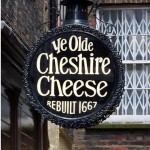 London in the 1600s brings to mind rats, the stench of rubbish, crowded streets, outbreaks of bubonic plague, the Great Fire, Shakespeare, horse-drawn carriages, dim light of oil lamps hanging outside houses and, of course, pub culture, which has continually played an important role in British history.
London in the 1600s brings to mind rats, the stench of rubbish, crowded streets, outbreaks of bubonic plague, the Great Fire, Shakespeare, horse-drawn carriages, dim light of oil lamps hanging outside houses and, of course, pub culture, which has continually played an important role in British history.